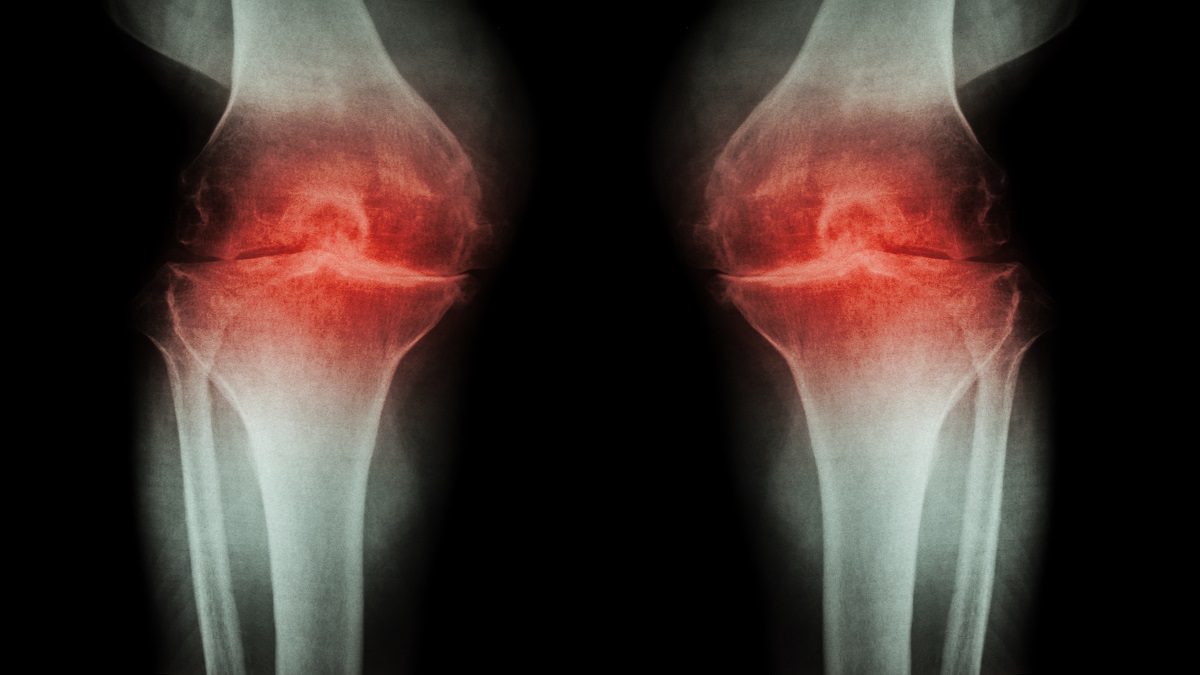What is knee osteoarthritis?
Knee osteoarthritis is the most frequent reason for musculoskeletal pain and disability in the joint of the knee. In the knee, the end of the thigh bone (the femur) and the shin bone (the tibia) are covered in smooth material called articular cartilage. In between these two bones is another kind of cartilage, known as menisci. This act likes pads to provide shock absorption. Joint fluid is also present to lubricate the joint.
Knee osteoarthritis begins when the articular cartilage breaks down and eventually involves the surrounding tissues, bones, and lubricating, or synovial, fluid. Knee osteoarthritis may involve partial breakdown or total loss of the cartilage, which results in places where the bone is exposed. Partial or isolated loss of cartilage material may occur due to trauma or injury, or it may happen due to changes that occur over time, for example, due to a wear-and-tear.
Causes of knee osteoarthritis
The main cause of knee osteoarthritis is a gradual deterioration of cartilage cushioning the ends of bones in the knee joints.
Eventually, the bone will rub against the bone if the cartilage wears down completely.
Knee osteoarthritis affects more than just cartilage breakdown. As a consequence, the bone changes, and the tissues that hold the joint together and attach muscle to bone deteriorates. The inflammation of the joint lining is also one of the consequences.
Prevalence
Osteoarthritis is a common disease in older Americans. Individuals who are older than 75 years are at greater risk. Some studies show that 80% of people in this age group have symptoms of the disease. In addition, research on deceased individuals has found osteoarthritis present in virtually all subjects at least 65 years old.
Knee osteoarthritis risks
Knee osteoarthritis often has no obvious cause that precipitates its onset. However, sometimes it does occur as the result of an infection or injury, and certain risk factors may contribute to the development of knee osteoarthritis. These knee osteoarthritis risk factors include:
- Genetic factors: It is possible that inherited traits carried by genetic material predispose individuals to be at higher risk for developing knee osteoarthritis.
- Age: As a person ages, the cartilage gradually loses its ability to heal. This increases the chance knee osteoarthritis will occur.
- Gender: Females who are at least 50 years of age or older are at greater risk than men for developing knee osteoarthritis.
- Repetitive injuries: Stress injuries typically occur on the job and occur more frequently with occupations that require a person to walk more than two miles daily, knee or squat down frequently or frequently lift heavy objects. Due to the pressure on the joints of the knees, these activities increase the risk of knee osteoarthritis.
- Being overweight: Carrying extra body weight puts excess stress on all the body’s joints and increases the risk for knee osteoarthritis.
- Being an athlete: Athletes who play tennis, football, and long-distance runners are at increased risk of knee osteoarthritis due to increased pressure on the knee joints.
- Other medical conditions: These include conditions such as diabetes mellitus and gout.















Leave a Reply
You must be logged in to post a comment.